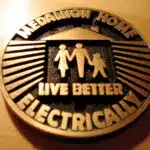Electrical systems are ubiquitous in modern society, powering devices from smartphones to industrial machinery. As an electrical systems engineer, it is imperative to understand how these systems operate and deliver power to their intended destinations. An electrical system consists of various components such as generators, transformers, transmission lines, and distribution networks that work together to ensure the efficient and safe delivery of electricity.
The purpose of this article is to explain the fundamental principles underlying the operation of electrical systems. We will explore the basic components of a typical electrical system and examine how they interact with each other. Additionally, we will discuss the role of various safety mechanisms that prevent overload or short-circuiting. By understanding how electrical systems function, we can appreciate their importance in our daily lives and improve our ability to serve others by ensuring reliable access to electricity.
Electrical Generators
Electrical generators are devices that convert mechanical energy into electrical energy. They play a vital role in the functioning of any electrical system, as they are responsible for producing the electricity that powers our homes, businesses, and industries. As such, it is essential to ensure that generators are maintained properly to prevent failures and prolong their lifespan.
Generator maintenance includes routine inspections, cleaning, lubrication, and periodic testing to ensure optimal performance. Regular maintenance can also help identify potential issues before they become major problems. For instance, if a generator’s cooling system is not working correctly, it could cause overheating that leads to failure. By detecting this early on through maintenance checks, appropriate measures can be taken to avoid such situations.
The use of renewable energy sources has become increasingly popular in recent years due to their environmental benefits. Many electrical systems now incorporate generators that harness renewable energy sources such as wind or solar power. These generators operate similarly to conventional generators but have a different source of input energy. As such, it is crucial for electrical engineers to understand how these types of generators work and how to maintain them appropriately.
Types Of Electrical Power
AC power is an alternating current that is generated from a variety of sources such as generators and dynamos. DC power is a direct current that is generated from a variety of sources such as batteries and photovoltaic cells. Solar power is an energy source that is generated from the sun’s radiation and can be collected through the use of photovoltaics. AC power is typically used in industrial and commercial applications, while DC power is more commonly used in consumer electronics. Solar power is becoming increasingly popular as an alternative energy source due to its low environmental impact. In order to maximize the efficiency of an electrical system, it is important to understand the differences between AC power, DC power, and solar power and select the appropriate power source for a given application.
Ac Power
Alternating current (AC) power is the most commonly used type of electrical power in modern society. It is an electrical system that periodically reverses its direction, allowing for efficient distribution over long distances. AC power distribution is achieved through a network of transmission lines and substations that convert high voltage levels at the source to lower levels for household use.
Three-phase power systems are a type of AC power system that deliver three separate phases of alternating current at different times, resulting in a smoother flow of energy and higher efficiency than single-phase systems. Three-phase power is widely used in industrial applications, such as motors, generators, and large-scale machinery due to its ability to provide consistent power without causing damage to devices.
In summary, understanding how AC power works is crucial for anyone working with electrical systems. With the use of three-phase power systems, electrical engineers can ensure that machinery operates efficiently and safely while minimizing energy loss during transmission and distribution. By implementing these types of electrical systems, we can continue to improve our society’s use of electricity while serving others with reliable and sustainable energy sources.
Dc Power
As an electrical systems engineer, it is crucial to have a comprehensive understanding of the different types of electrical power available. One such type is direct current (DC) power, which is characterized by its unidirectional flow of electricity. Unlike alternating current (AC), DC power has a constant voltage level and does not periodically reverse its direction.
One advantage of DC power is its efficiency in energy transmission and distribution. Due to its constant voltage level, there are minimal energy losses during transmission, making it an ideal choice for long-distance power transmission. Furthermore, DC power can be harnessed from renewable energy sources such as solar panels and wind turbines, where it can be stored in batteries for later use.
DC power finds applications in various fields such as telecommunications, transportation, and renewable energy systems. In renewable energy systems such as solar panels or wind turbines, DC power must be converted to AC power using inverters before being used at home or industries. By utilizing DC power in these applications, we can ensure that our society’s use of electricity remains sustainable while serving others with reliable and efficient energy sources.
Solar Power
Solar power is a type of renewable energy that utilizes photovoltaic cells to convert sunlight into electricity. It is an essential source of electrical power and a crucial part of our society’s transition towards sustainable energy. As an electrical systems engineer, understanding the advantages and disadvantages of solar power is vital in designing and implementing efficient solar energy systems.
One significant advantage of solar power is its cost-effectiveness in the long run. While initial installation costs may be high, the maintenance costs are relatively low compared to traditional fossil fuel-based power sources. Furthermore, solar panels have a lifespan of 25-30 years, which means that they can generate electricity for decades after their initial investment. On the other hand, one disadvantage of solar power is its dependency on daylight hours and weather conditions – it may not be as reliable as traditional sources in areas with less sunlight.
In terms of cost analysis, solar power has become increasingly competitive with traditional sources such as coal or natural gas-based electricity generation. In some areas, it has already become cheaper than conventional sources without government subsidies. This cost competitiveness coupled with its environmental benefits makes it a popular choice for households and industries alike seeking to reduce their carbon footprint while serving others with reliable energy sources.
Electrical Transformers
Having discussed the different types of electrical power in the previous section, it is now important to delve into how these types of power are distributed throughout a system. This is where electrical transformers come into play. Electrical transformers are devices that transfer electrical energy from one circuit to another through electromagnetic induction. They do this by changing the voltage level of an alternating current (AC) while keeping the frequency constant.
Step up vs. step down transformers are two common types of transformers used in electrical systems. Step up transformers increase the voltage level of an AC signal, whereas step down transformers decrease it. The choice between these two types depends on the specific application and requirements of the system. For instance, step up transformers are used to transmit electricity over long distances at high voltages to reduce energy losses caused by resistance in transmission lines.
One crucial aspect of transformer operation is transformer efficiency. Efficiency refers to how much energy is lost during energy transfer due to factors such as heat generated by the transformer’s core and winding resistance. High-efficiency transformers minimize these losses and result in less wasted energy, lower operating costs, and reduced environmental impact. In summary, understanding how electrical transformers work is essential for ensuring efficient and reliable distribution of electrical power throughout a system while minimizing energy losses due to impedance and other factors.
As we continue exploring how an electrical system works, one critical area that requires attention is voltage regulation. Voltage regulation is essential because most electronic devices require a relatively stable voltage supply to function correctly. Without proper voltage regulation, electronic equipment could experience damage or malfunctioning, leading to costly repairs or replacements. Therefore, in our next section, we will discuss techniques used in voltage regulation and their importance in maintaining optimal performance for electronic devices connected within an electrical system.
Voltage Regulation
Voltage regulation is an essential aspect of electrical systems as it helps to maintain a consistent voltage level within the system. Voltage fluctuations can occur due to various reasons, such as changes in load or unexpected spikes in power supply. Such fluctuations can cause damage to electronic devices and disrupt the functioning of the entire electrical system. Voltage regulators are electronic devices that help regulate the voltage levels and protect the system from potential damage.
There are two types of voltage regulators – linear and switching voltage regulators. Linear voltage regulators work by dissipating excess energy as heat, while switching voltage regulators convert excess energy into a different form of energy, such as magnetic or kinetic energy. The choice between these two types depends on factors such as cost, efficiency, and output stability requirements.
Voltage stabilizers are another type of device used for regulating voltage levels. They work by adjusting the incoming voltage to match a set level, thereby providing a constant output voltage despite variations in input voltage. These devices are commonly used in areas with frequent power outages or unstable power supply conditions.
Moving forward, current limiting devices play another crucial role in ensuring the smooth functioning of electrical systems. These devices limit the amount of current flowing through an electrical circuit to prevent any damage due to excessive currents. Various types of current limiting devices exist, including fuses, circuit breakers, and overcurrent protection relays. These devices offer an additional layer of protection against faults and overloads that could cause significant damage if left unchecked.
Current Limiting Devices
Voltage regulation is a crucial aspect of electrical systems that ensures the safe and efficient delivery of power. However, it is not the only factor that needs to be considered in designing such systems. One important consideration is the use of current limiting devices to prevent overloading and damage to equipment. These devices are designed to restrict the flow of current in a circuit when it exceeds a certain threshold.
There are several applications for current limiting devices in electrical systems. One example is in power distribution networks, where they can be used to protect transformers from overloading due to faults or other abnormal conditions. They can also be used in electronic circuits, where they provide protection against short circuits or other faults that could damage sensitive components.
Design considerations for current limiting devices include factors such as the maximum current rating, the response time, and the type of fault conditions they are intended to protect against. It is also important to consider the cost and reliability of these devices, as well as their compatibility with other components in the system.
In summary, current limiting devices play an important role in ensuring the safety and reliability of electrical systems. By carefully considering their design and application, engineers can help prevent overloading and damage to equipment, reducing downtime and maintenance costs for users. The next section will explore another aspect of overcurrent protection: how it can be achieved through fuses and circuit breakers.
Overcurrent Protection
Overcurrent protection is an essential aspect of electrical systems. Overcurrent refers to any current that exceeds the rated current of a circuit, and it can result from short circuits or overloads. Overcurrent protection is put in place to prevent damage to equipment, fires, and other safety hazards.
Circuit interruption is one way to provide overcurrent protection in electrical systems. When an overcurrent occurs, the circuit breaker trips and disconnects the power supply from the affected circuit. This action prevents further damage to the system by cutting off the flow of electricity. Circuit interruption technology has evolved significantly over time, with modern circuit breakers incorporating advanced features such as remote control and monitoring.
Fuse technology is another form of overcurrent protection commonly used in electrical systems. Fuses are designed to interrupt current flow when there is an overload or short circuit by melting a metal wire inside them. They are simple devices that offer effective protection against overcurrents but need to be replaced after they have blown. Fuse technology has been around for many years and has proved reliable in protecting electrical systems from damage caused by overcurrents.
As we have seen, overcurrent protection is crucial in ensuring safe operation of electrical systems. Circuit interruption and fuse technology are some of the methods used to provide this protection, each with its advantages and disadvantages. However, with advancements in technology, newer forms of protective devices such as smart fuses are emerging, providing more efficient ways of safeguarding against overcurrents. In the next section, we will delve into another protective device – circuit breakers – used extensively in modern electrical systems.
Circuit Breakers
Ensuring the proper functioning of electrical systems requires the use of various components like circuit breakers. These devices are used to protect electrical circuits from overloading, which could lead to damage or even fire. Circuit breakers work by interrupting the flow of electricity when a fault is detected, thereby preventing any further damage.
Circuit breaker maintenance is crucial in ensuring that these devices work as intended. Regular inspection and testing can help identify issues before they become major problems. Common circuit breaker problems include tripping due to overload or short circuits, faulty wiring connections, and wear and tear on internal components.
Properly maintaining circuit breakers can help prevent these issues and ensure that electrical systems continue to function safely and efficiently. In the next section, we will discuss another important component of electrical systems: electrical switches.
Electrical Switches
Electrical switches play an essential role in the electrical system, as they control the flow of electricity by turning it on or off. Switches are devices that enable users to turn lights or appliances on and off using a simple mechanism. Switches come in different types, each with its unique switching mechanism.
The three main types of switches are single-pole, double-pole, and three-way switches. Single-pole switches control a single circuit from one location, while double-pole switches control two circuits simultaneously. Three-way switches allow users to control a light or appliance from two different locations.
Switching mechanisms refer to how the switch is actuated to turn something on or off. Some common switching mechanisms include toggle switches, rocker switches, push-button switches, and rotary switches. Toggle switches are perhaps the most familiar type of switch and feature a lever that is flipped up or down to turn something on or off.
Understanding switch types and switching mechanisms is crucial for any electrical engineer working on an electrical system project. By knowing which switch type and mechanism to use for a particular application, engineers can ensure maximum efficiency and safety in the electrical system. In the next section, we will discuss electrical wiring and its importance in ensuring proper functioning of an electrical system.
Electrical Wiring
As we have discussed earlier, an electrical system consists of various components that work together to ensure the flow of electricity from the source to the end device. One crucial component in this system is electrical wiring. Electrical wiring is responsible for connecting all the devices and components of an electrical system in a safe and efficient manner.
However, common mistakes during installation or maintenance can lead to serious safety hazards. For instance, incorrect connections or improper insulation can cause electric shocks or even fires. Therefore, it is essential to follow proper safety measures while working on electrical wiring. This includes wearing protective gear such as gloves and goggles, turning off the power supply before starting any work, and ensuring that all connections are secure.
To further emphasize the importance of safety when dealing with electrical wiring, let us take a look at the following table:
| Type of Injury | Percentage |
|---|---|
| Electric Shock | 44% |
| Burns | 20% |
| Falls | 19% |
These statistics highlight the potential dangers involved in working with electricity and why it is crucial to take every precaution necessary to prevent accidents.
In conclusion, proper installation and maintenance of electrical wiring are critical for ensuring a safe and efficient electrical system. By avoiding common mistakes and following safety measures such as wearing protective gear and turning off power supply before starting work, we can minimize the risk of accidents. In the subsequent section, we will discuss another essential aspect of an electrical system- electrical grounding.
Electrical Grounding
Electrical grounding is an essential aspect of electrical systems. It ensures safety by providing a path for the current to flow in case of a fault, preventing damage to equipment and people. The importance of grounding cannot be overstated because it protects both personnel and equipment from electric shock, fire hazards, and other electrical hazards.
Grounding techniques involve connecting the conductive parts of the electrical system to the earth’s surface using different materials such as copper or aluminum rods. These materials are buried deep into the soil to ensure that they make good contact with the earth for maximum conductivity. Grounding can also be achieved through metal water pipes or structural steel if they meet specific criteria.
The materials used for grounding should have low resistance and high conductivity properties. Copper is an excellent material for this purpose because it has low resistance and high conductivity, making it ideal for grounding applications. Other materials that can be used include aluminum, stainless steel, or galvanized steel. In summary, proper grounding techniques and materials are essential in ensuring safety in electrical systems by providing a safe path for electricity in case of faults.
Moving on to electrical distribution networks, it is crucial to understand how these networks operate and their components’ functions. Electrical distribution networks are responsible for delivering power from the generation station to homes, businesses, and industries. They consist of transformers, transmission lines, distribution lines, substations, and switchgear equipment that work together to transmit power efficiently while maintaining safety standards.
Electrical Distribution Networks
In the previous section, we discussed electrical grounding and how it serves as a safety measure to protect individuals and equipment from electrical shocks. Now, let’s shift our focus to another crucial aspect of an electrical system: Electrical Distribution Networks. These networks serve as the backbone of the power system, enabling electricity to be transported from power plants to homes, businesses, and industries.
Electrical Distribution Networks are complex systems that require careful management to ensure reliability and efficiency. Smart grid technology has revolutionized the way these networks operate by incorporating advanced sensors, communication systems, and control mechanisms that allow for real-time monitoring and optimization of energy flows. This technology enables utilities to identify potential issues before they become critical and respond quickly to outages or disruptions.
Renewable energy integration is another important consideration in modern Electrical Distribution Networks. The increasing adoption of renewable energy sources such as wind and solar power presents new challenges for electrical engineers in managing fluctuating energy supply levels while maintaining a stable grid. However, smart grid technology can help address these challenges by enabling better prediction and management of renewable energy resources.
- As we move towards a more sustainable future with clean energy sources, it is essential that our Electrical Distribution Networks evolve.
- Smart grid technology is a game-changer in improving the reliability and efficiency of these networks.
- Integrating renewable energy sources is vital but requires careful planning and management.
As electrical systems engineers, it is our duty to ensure that Electrical Distribution Networks continue to meet the needs of society while minimizing environmental impacts. In the next section, we will explore another critical aspect of an electrical system: Electrical Load Management. This involves balancing supply and demand while ensuring that the network remains stable under varying load conditions.
Electrical Load Management
A well-designed electrical system can operate seamlessly and efficiently, with the ability to handle various loads without any hiccups. However, it is important to manage these loads effectively to ensure optimal performance as well as safety. Smart load management techniques have been developed to help engineers maintain the balance between energy usage and distribution.
One of the primary ways in which smart load management can be achieved is by using energy-efficient appliances. By reducing the amount of power needed for each device, engineers can reduce overall energy consumption in a building or facility. This not only helps save on energy costs but also makes the electrical system more sustainable and environmentally friendly.
Smart load management also involves monitoring and controlling electricity usage in real-time. This allows engineers to identify any potential issues that may arise and take corrective measures before they become major problems. With advanced sensors and automation technology, it is possible to optimize electrical systems for maximum efficiency, ultimately leading to cost savings and reduced environmental impact.
As an engineer responsible for designing or maintaining an electrical system, it is important to understand the importance of load management. By implementing smart load management techniques such as using energy-efficient appliances and real-time monitoring, you can ensure that your system operates at peak efficiency while minimizing risks associated with overloading or other issues. In the next section, we will discuss how adherence to electrical safety standards plays a crucial role in ensuring safe operation of an electrical system.
Electrical Safety Standards
Electrical safety regulations are a set of guidelines and procedures designed to ensure that electrical systems are installed and maintained in a safe manner. The purpose of these regulations is to prevent accidents, injuries, and fatalities that can occur as a result of electrical malfunctions or other hazards. Adhering to these standards is essential for ensuring the safety of both people and property.
One of the most important aspects of electrical safety regulations is the importance of training. It is critical that all personnel who work with or around electrical equipment receive proper training on how to do so safely. This includes not only electricians and other technical personnel but also non-technical staff who may encounter electrical hazards in their day-to-day work.
In addition to training, regular inspections, maintenance, and testing are also critical components of electrical safety. Proper maintenance helps identify potential problems before they cause an accident or malfunction, while regular testing ensures that equipment is functioning properly and safely. By following these guidelines, we can help ensure that our electrical systems are safe and reliable for years to come.
Three items to keep in mind about Electrical Safety Standards:
- Electrical safety regulations are designed to protect people and property from accidents, injuries, and fatalities caused by electrical malfunctions.
- Proper training is critical for all personnel who work with or around electrical equipment.
- Regular inspections, maintenance, and testing are essential components of ensuring electrical safety.
Moving forward into the subsequent section about “Electrical Maintenance and Troubleshooting,” it’s important to understand that maintaining your system in compliance with established standards doesn’t just keep you safe – it also helps your equipment last longer and operate more efficiently. In the next section, we’ll explore some key strategies for keeping your system running smoothly over time.
Electrical Maintenance And Troubleshooting
Electrical Maintenance and Troubleshooting is a crucial aspect of keeping an electrical system running smoothly. It involves identifying and fixing issues that can arise during the operation of an electrical system. Common issues that can occur include short circuits, overloading, grounding faults, and insulation failure. These issues can lead to power outages, equipment damage, and even electrical fires.
To prevent these issues from occurring, it is important to take preventative measures such as regular inspections and maintenance. Inspections should be conducted at least once a year to identify any potential problems before they become serious. Maintenance involves cleaning components, replacing worn-out parts, and ensuring that all connections are tight and secure. In addition to inspections and maintenance, it is also important to follow all safety guidelines when working with electricity.
In summary, Electrical Maintenance and Troubleshooting is essential for ensuring the safe and efficient operation of an electrical system. By taking preventative measures such as regular inspections and maintenance, common issues such as short circuits, overloading, grounding faults, and insulation failure can be avoided. Following safety guidelines when working with electricity is also crucial in preventing accidents. In the next section, we will discuss future developments in electrical systems that may further improve their safety and efficiency.
Future Developments In Electrical Systems
Electrical Maintenance and Troubleshooting is an essential component in ensuring the longevity and reliability of electrical systems. By performing regular maintenance checks and identifying potential issues, electrical engineers can prevent costly downtime and ensure that the system continues to operate efficiently. Troubleshooting, on the other hand, involves identifying and resolving issues that have already occurred. With proper training and experience, an electrical engineer can quickly diagnose problems and implement effective solutions.
Looking towards the future, there are exciting developments in Electrical Systems that will continue to improve efficiency and sustainability. One such development is Energy Storage technology, which allows for energy to be stored during periods of low demand and used during times of high demand. This is particularly useful for renewable energy sources such as solar or wind power, which may produce excess energy during non-peak hours. Additionally, Smart Grid technology is becoming more prevalent in modern electrical systems. Smart Grids utilize advanced sensors and communication technologies to monitor energy usage in real-time and adjust accordingly. This allows for greater control over the distribution of electricity while also reducing waste.
As Electrical Systems Engineers continue to innovate new solutions for improving efficiency and sustainability, it is important to keep in mind the needs of society as a whole. With a growing population and increasing demand for reliable energy sources, it is crucial that we prioritize sustainable practices and develop technologies that serve both consumers and the environment. By embracing new developments such as Energy Storage and Smart Grid technology, we can create a future where energy production is efficient, reliable, and eco-friendly.
- 4 Items List:
- Increased efficiency in Energy Storage technology
- Advancements in Smart Grid technology for better monitoring capabilities
- The use of renewable energy sources for sustainable practices
- A focus on developing technologies that serve both consumers and the environment , such as electric vehicles and energy-efficient appliances.
Conclusion
The electrical system is complex and requires a deep understanding of the various components that make it work. Electrical generators are used to produce electricity, which can be transmitted through different types of power lines and transformers to regulate voltage levels. Current limiting devices help protect against overload, while load management ensures that the electrical system functions efficiently.
Safety standards must also be followed to prevent accidents and ensure the longevity of the system. Regular maintenance and troubleshooting are necessary to keep the electrical system functioning properly. As an electrical systems engineer, I am always looking for ways to improve the system’s efficiency and reliability.
In conclusion, the electrical system is a vital component of modern society, powering everything from homes to businesses. It is a complex network that requires careful planning and attention to detail. The future of electrical systems holds great promise with advancements in technology such as renewable energy sources and smart grids. As we move towards a more sustainable future, it is important that we continue to innovate in order to improve our electrical systems. Through collaboration and innovation, we can create a brighter future for generations to come.
Image Credits
- “UK Minister for Africa and International Development, Grant Shapps MP, is shown a real-time solar electricity monitoring system in Lagos” by DFID – UK Department for International Development (featured)

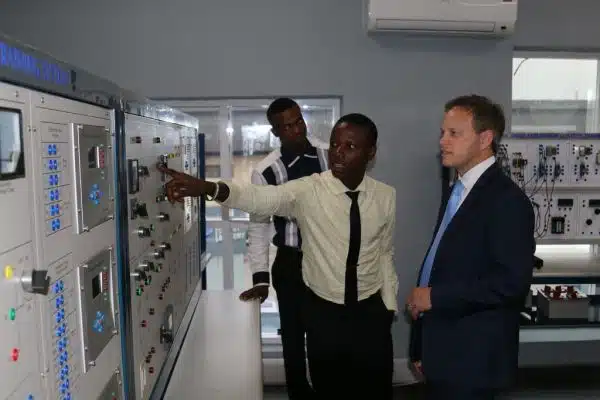

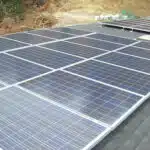






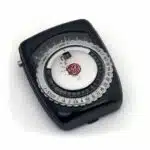
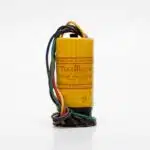

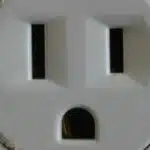



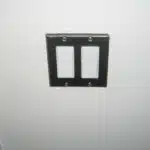




![How To Replace A Single-Pole Wall Switch 22 '... All in all it's just another [switch] in the wall.' ...](https://green-life.blog/wp-content/uploads/2023/05/17xmP5qMtVjq-150x150.jpg.webp)

